- 4 Minutes to read
- Print
- DarkLight
- PDF
Global Fields
- 4 Minutes to read
- Print
- DarkLight
- PDF
Global Fields are used for planning and forecast calculations in templates. Global values are pulled automatically by system-defined formulas within the planning templates based on the associated entity and scenario.
How to Add a Global Field?
- Navigate to Maintenance > Templates > Global Fields.
- Click the Add button.

- Enter a Global Field Code and Name to identify it.
- For Global Field Format, select from the following:
- Number - Store global field data (i.e. rates) in Number format to be used in planning calculations within a template.
- Currency - Store global field data in Currency format. A currency symbol will be placed before the numerical value.
- Percent - Store global field data in Percent format. A percent symbol will be placed after the numerical value.
- Text - Store global field data in Text format.
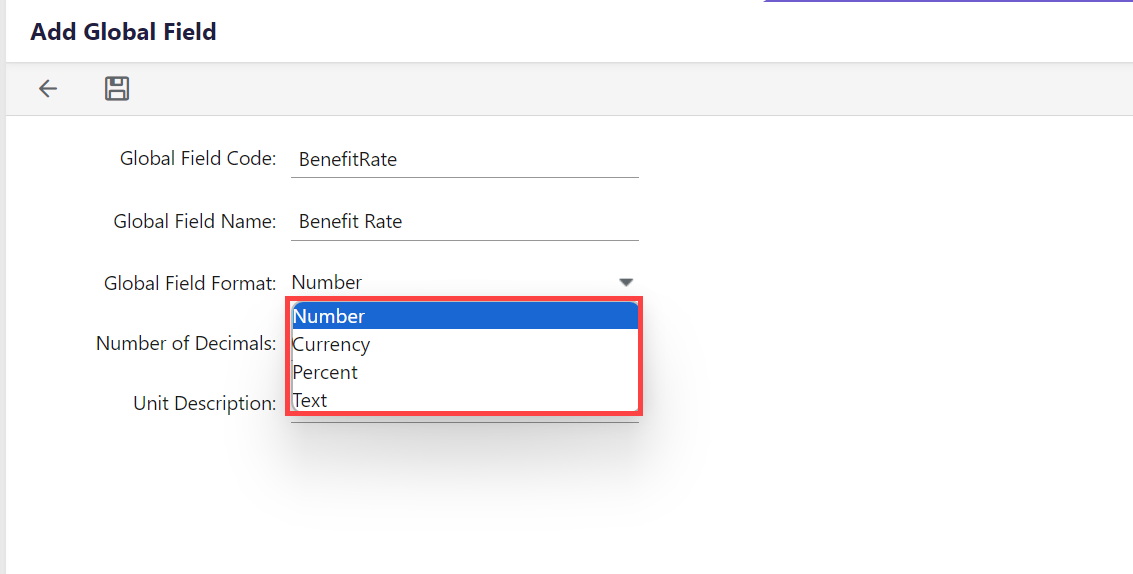
- Select the number of decimals for display in the template. For example, if you select two, a number will display as 00.00.
- For Unit Description, you can optionally enter an additional description of the global field.
How to Input Global Field Data?
Now that the global field is added, input global field values. Global field values are maintained by a scenario with values entered against the planning entity. Once Global Fields are entered in the Default Scenario, you can map them to other scenarios and budget entities during entity mapping.
- On the Global Fields page, select a global field and click Global Fields Data Input. The Global Fields Data Input page is displayed.

- Ensure the Default Scenario is selected. Select a budget entity in the left pane. Global fields are displayed in the right pane.
- Enter the global field value in the Value column for the associated global field.
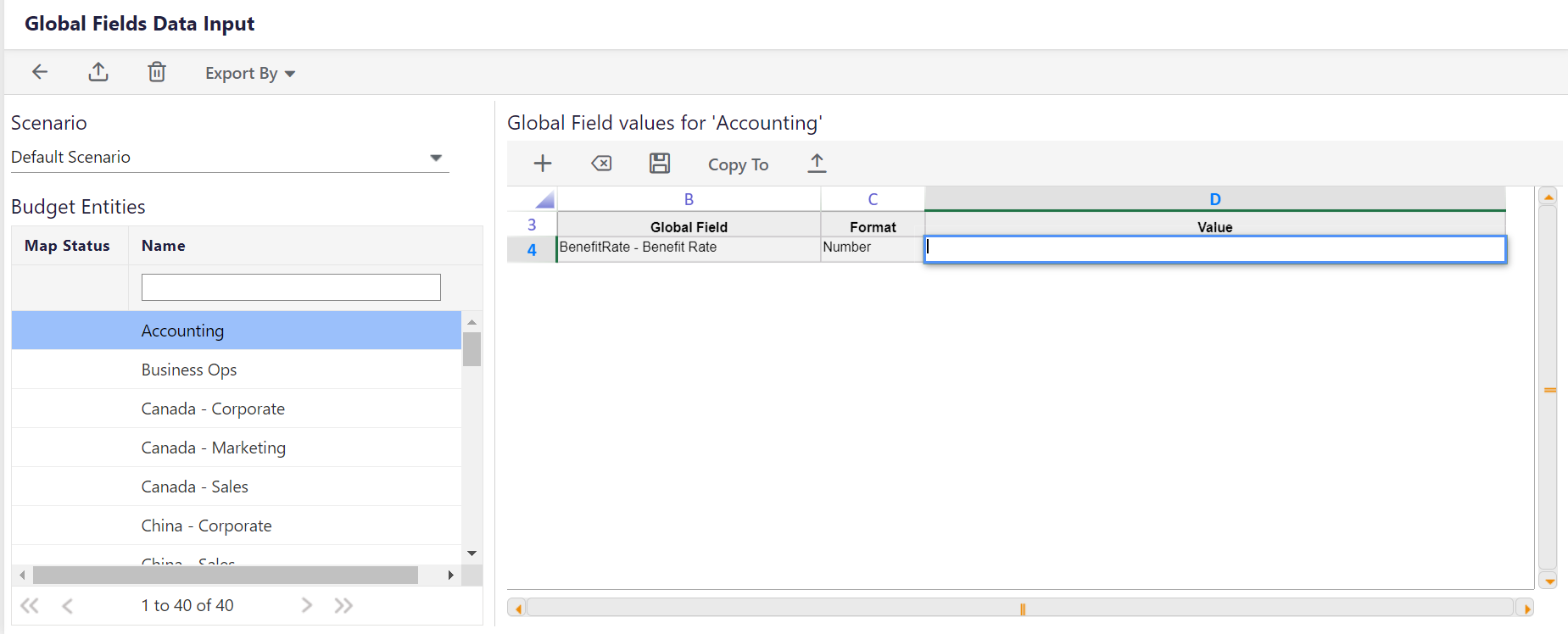
- Click Save.
How to Map Global Fields to Templates for Budget Entity and Scenario?
Once you create global fields, enter values, and map to scenarios and budget entities, you need to map the global field to templates mapped to the scenario.
- Navigate to Maintenance > Templates > Template Setup.
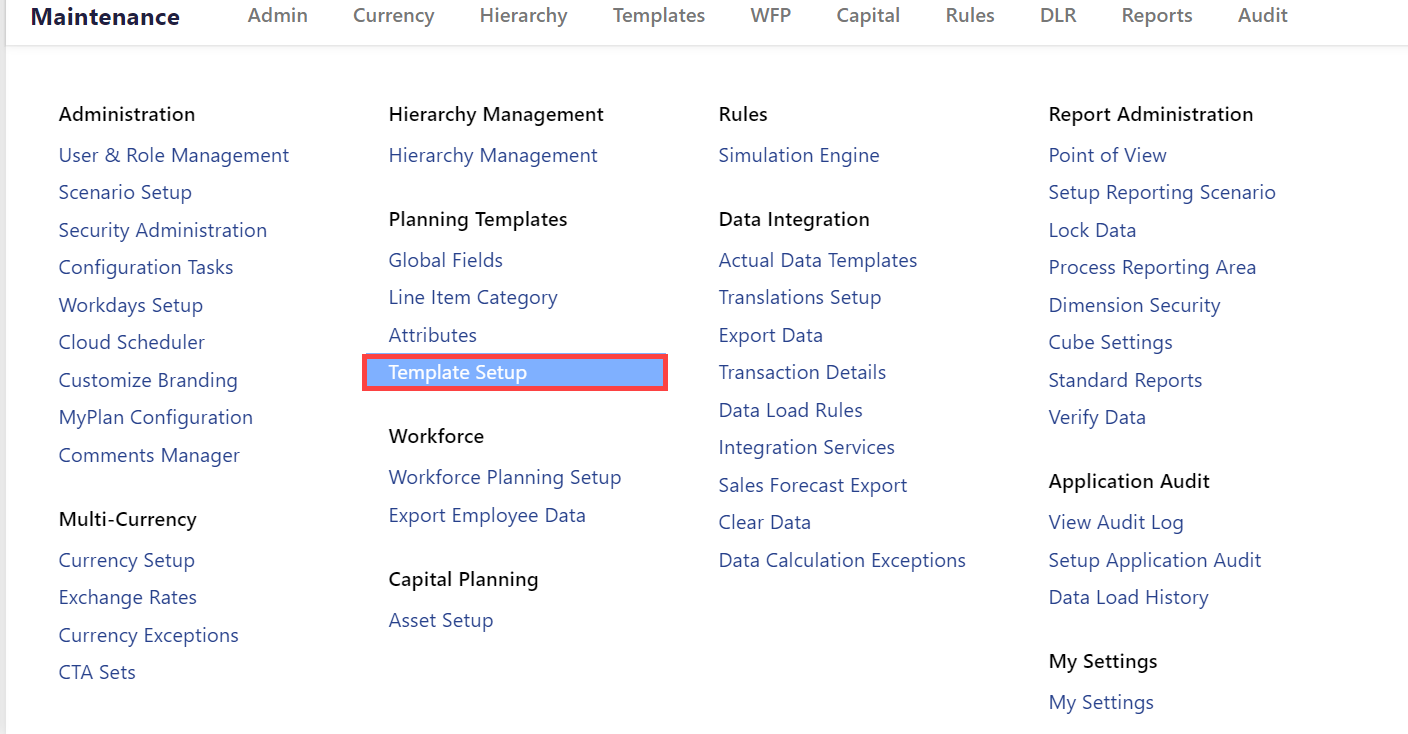
- Select the scenario you mapped the global field to.
- Select the template you want to map the global field to.
- Click Mappings > Global Field Mapping. Note that global fields must be enabled when the template is added to map them to the template. The Map Global Fields page is displayed.

- Select the global field in the Unmapped Global Field pane and click the forward arrow to map it.
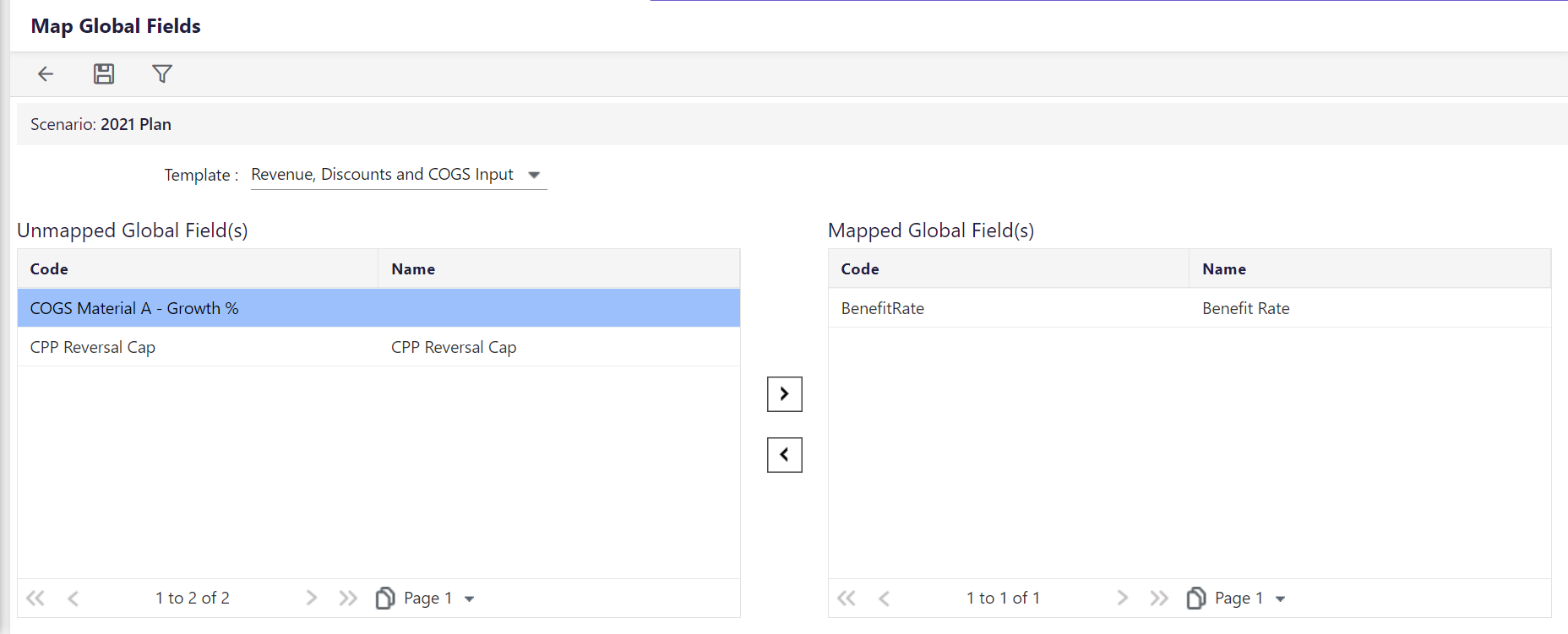
- Click Save.
How to Map a Global Field to Another Scenario and Budget Entities?
Once you map the global fields to budget entity and scenario, you can map Global Fields to other scenarios and entities from the same page (Global Fields Data Input) by selecting another scenario, and clicking the Add button to display the Add Global Fields page.
- Click Global Fields Data Input on the Global Fields page.
- Click Add. The Add Global Fields page appears.
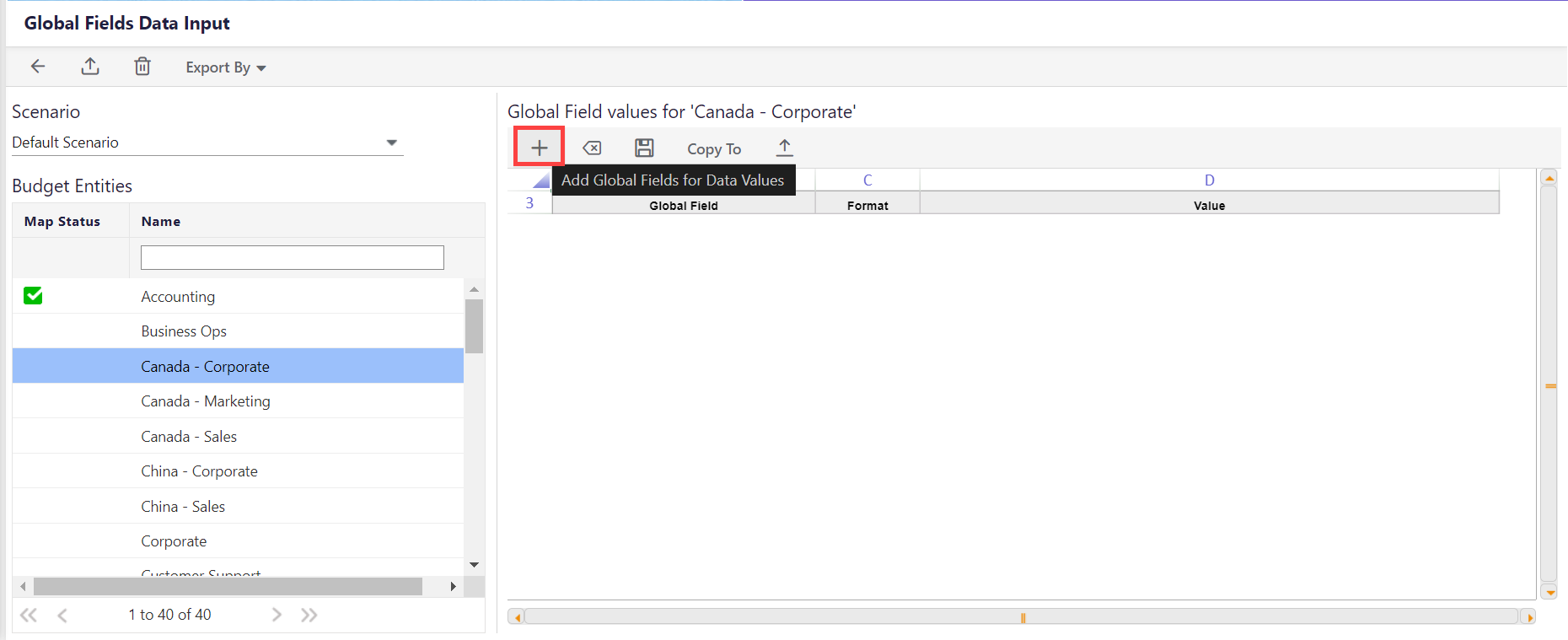
- On the Add Global Fields page, select global fields for the scenario and then click Add.
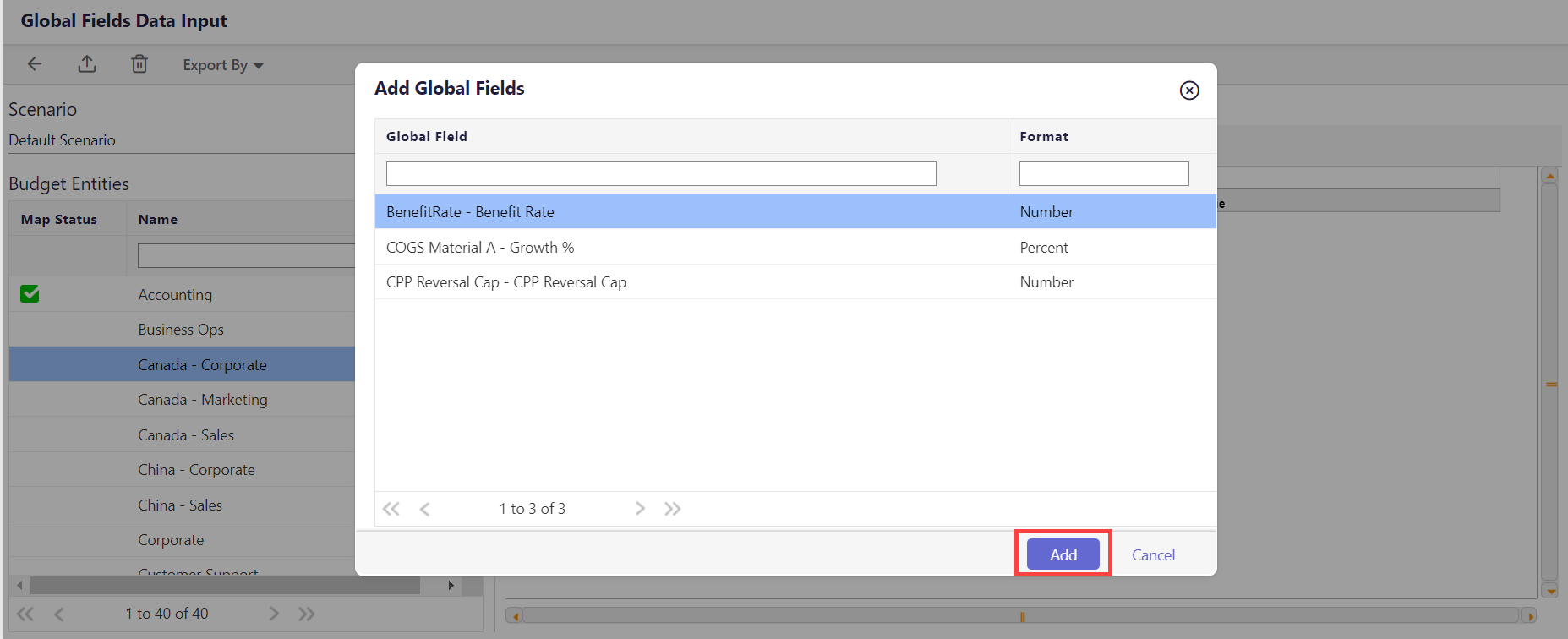
- Enter a value for the global field and then click Save.
- Map the newly added global field to entities associated with the scenario. All entities are listed in the left pane.
- Select the global field and click CopyTo in the right pane. The Copy To-Budget Entities page is displayed.
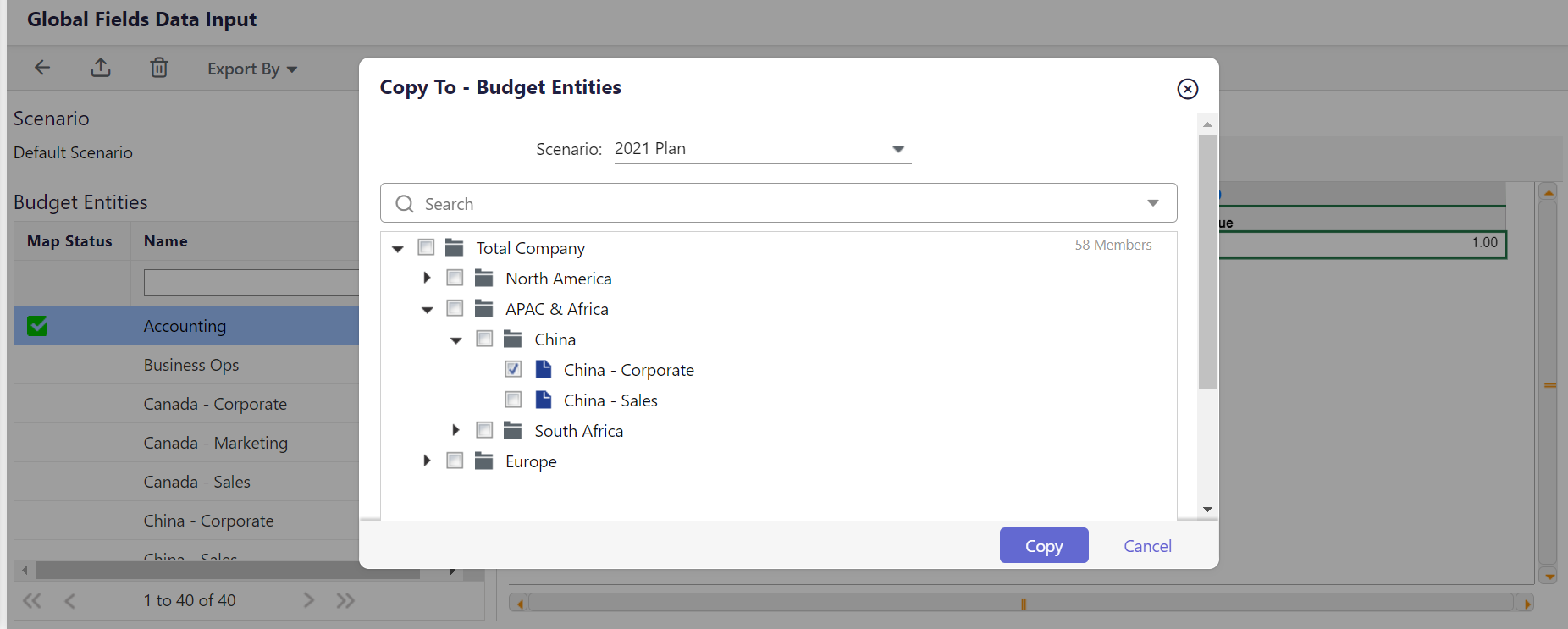
- Select the checkbox next to each budget entity you want to map the global field to and click Copy.
Mass Upload Global Fields
Global Fields are used to drive budget assumptions and calculations. Administrators now have the ability to upload changes and adjustments to existing Global Field values at a mass level. This eliminates to need to interact with Global fields on a manually entity by entity basis.
- Navigate to Maintenance > Templates > Global Fields.
- Select a defined Global Field value, then click the Global Fields Data Input option.

- The Global Fields Data Input page is displayed, the Upload file button is also shown.Note:The purpose of the Upload file button is to allow administrators to upload changes and updates to all Global Field values by entity without having to enter values one at a time.
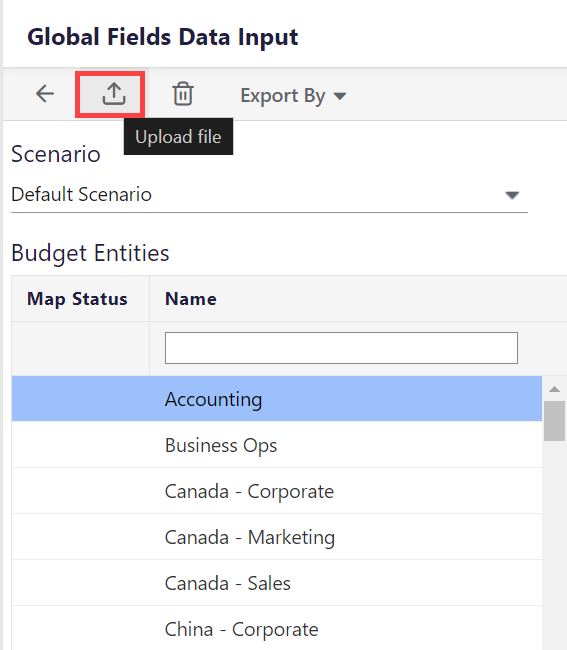
Global Fields Mass Load - Export By
Export all Global Fields by Name, Code, or Label (name + code). This option is useful when trying to make a large number of Global Field changes or adjustments.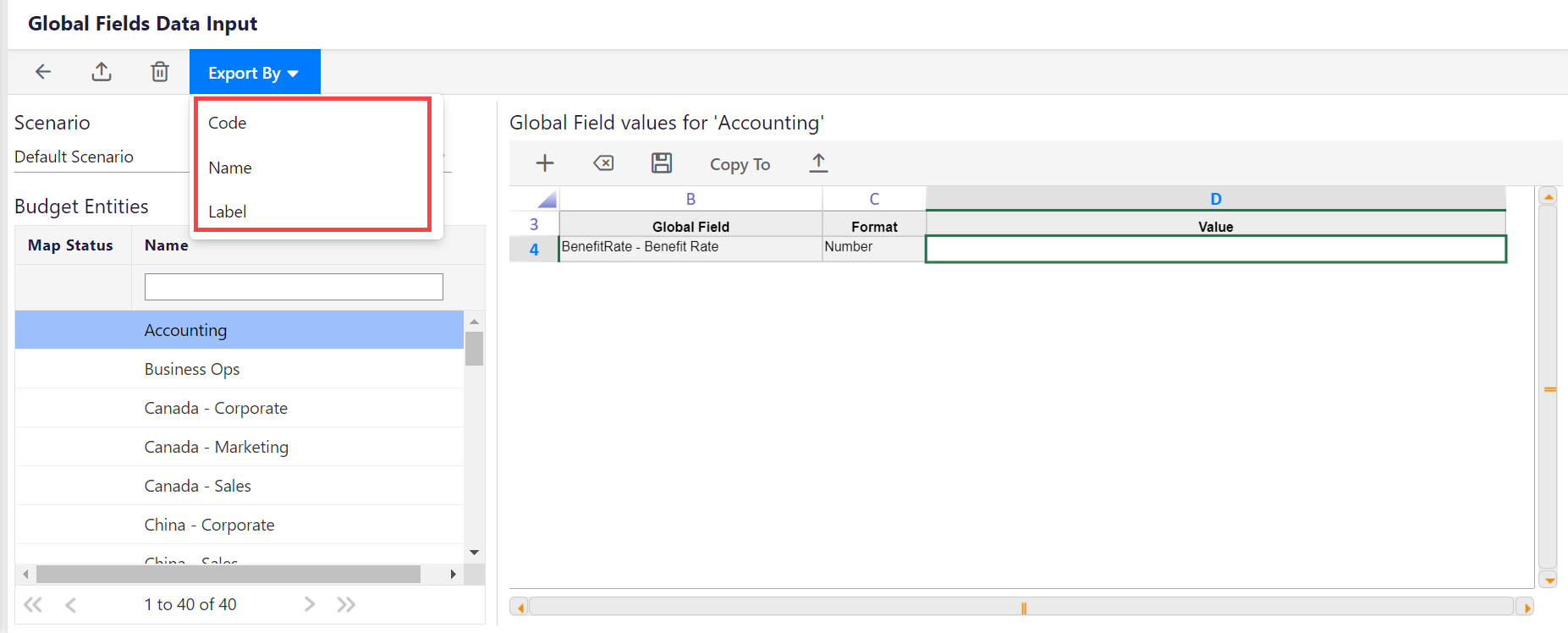
Global Fields Mass Load
If you want to make a large number of changes or adjustments by entity to a large number of fields, the best practice way to do so is to use this Global Fields Mass Load feature. If you only want to make a small number of changes to a handful of entities, it is best practice to do that manually, it can be easier and fast. Below are the necessary steps for using the Global Fields Mass Load feature.
Use the Export By feature explained above to export the Global Fields by Budget Entity Code. You should have a file that has Budget Entooks like the one as shown below.

Once the file is exported make the necessary adjustments and save the newly exported file to your local machine. It is important that you remove the header row before loading to Planful. If you do not remove this row, all other lines will load but the load will fail for the header row. For example, you load a file with 1 header row and 10 data rows. Only the header row fails because it has invalid data. The other 10 data rows are uploaded.
Instead of selecting each line clicking the Copy To option and selecting the entities to copy the global field to, click Upload file, to upload the file with the Global Field adjustments that you just saved to your local machine.

Select the saved file to load, by clicking the Choose File button.
Note:You can upload XLSX file types only with a maximum size of 10MB and 30k rows.Click Submit to perform the upload. A message will appear indicating the upload is processing and you can check the status in the Detail Log.


